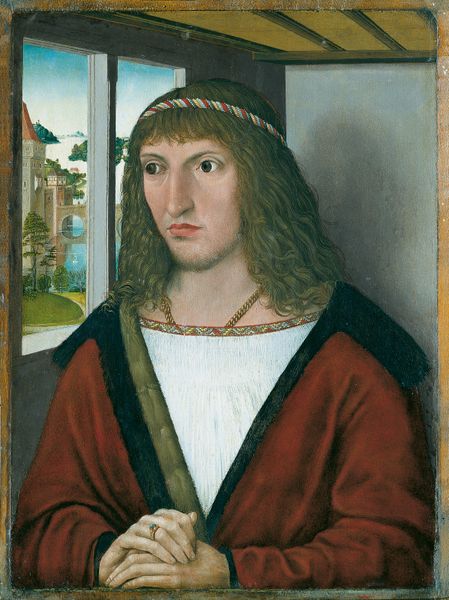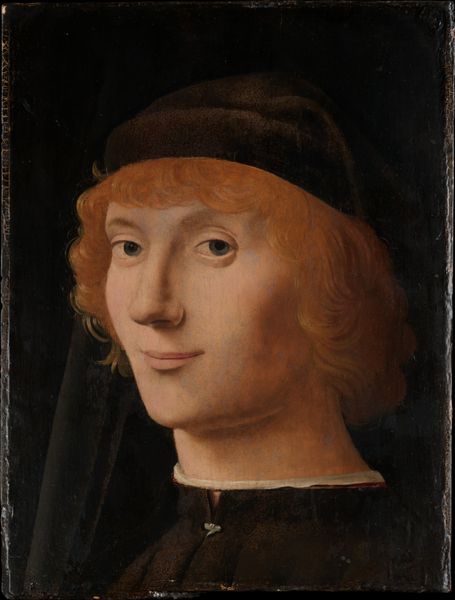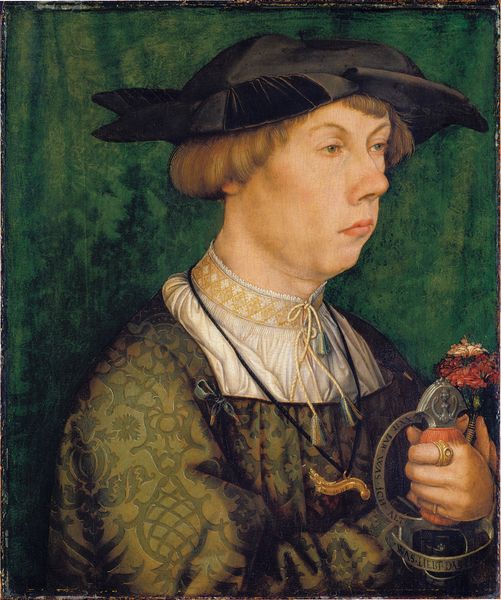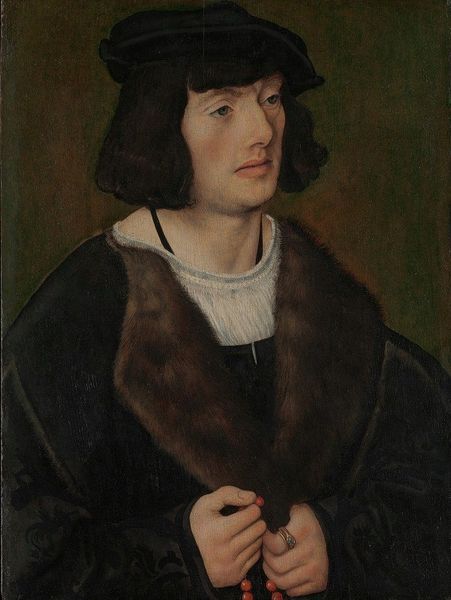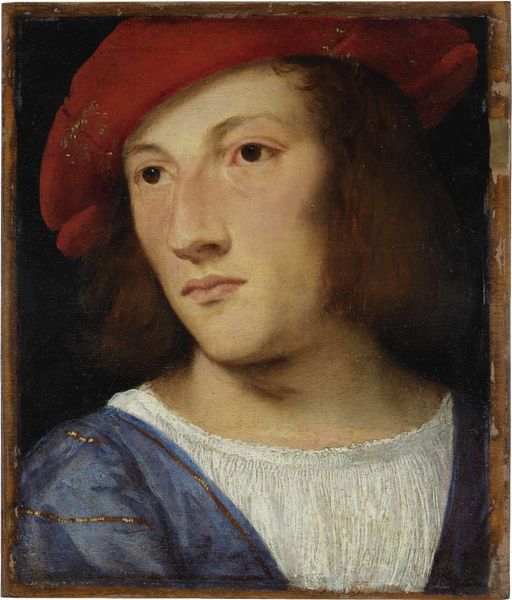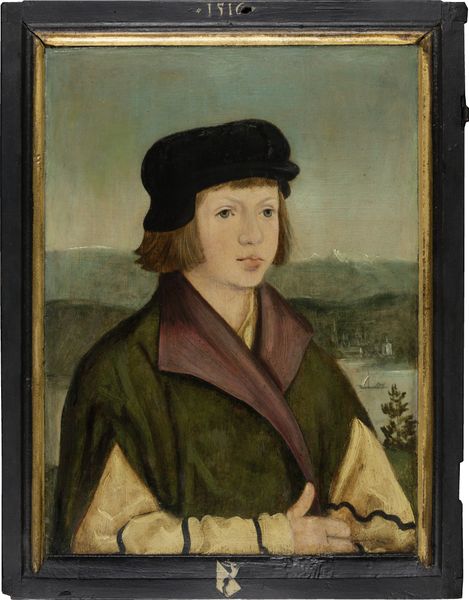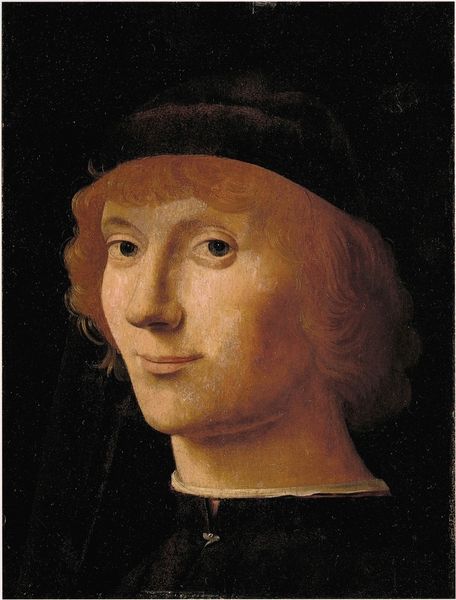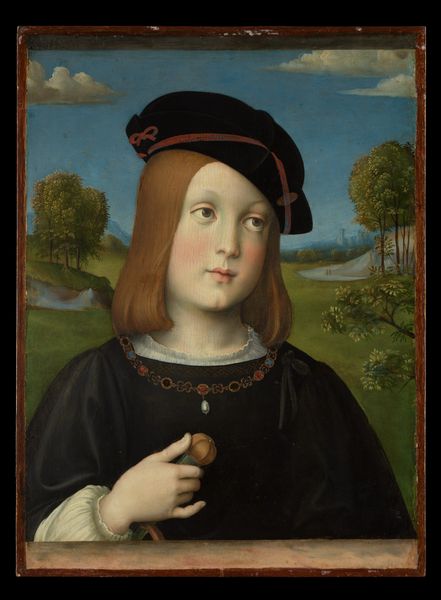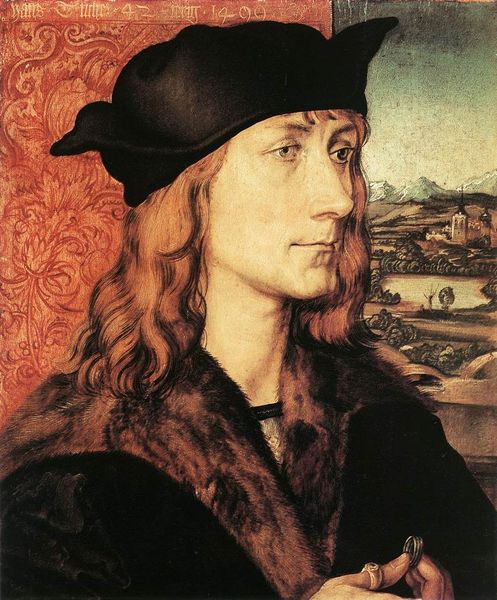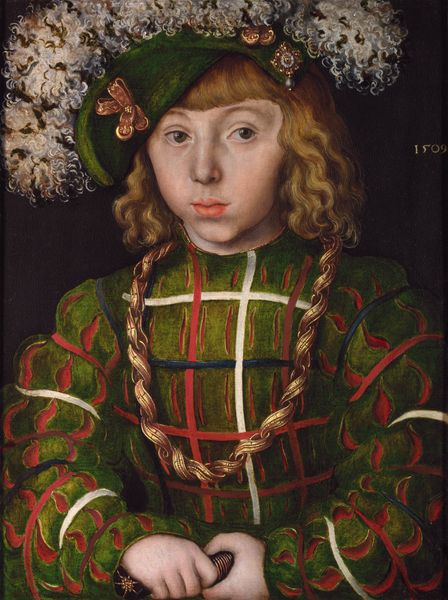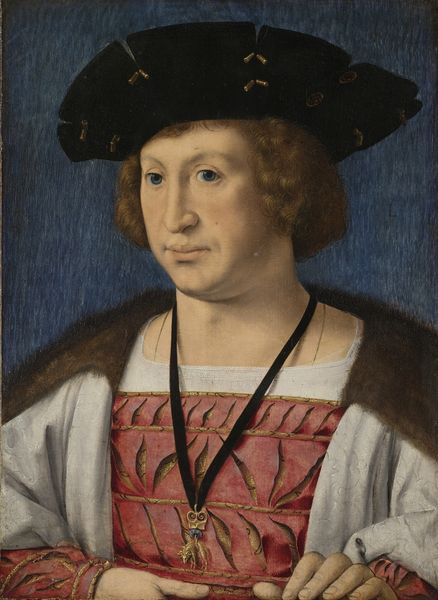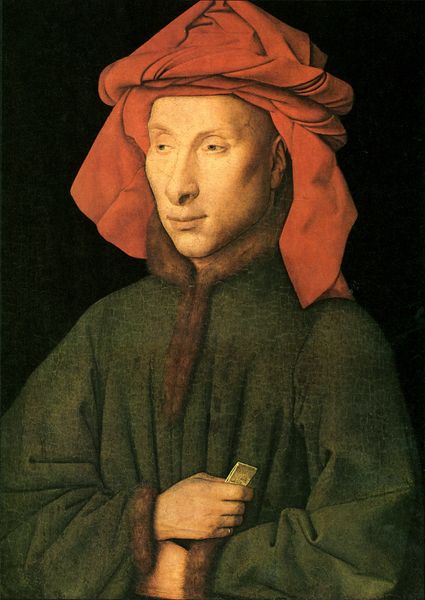
painting, oil-paint
#
portrait
#
painting
#
oil-paint
#
11_renaissance
#
oil painting
#
early-renaissance
#
realism
Dimensions: 38.4 x 28.6 x min. 0.8 cm
Copyright: Public Domain
Editor: Here we have Wolf Traut's "Portrait of Hans Geyger" from 1501, created with oil paint. The realism is quite striking, almost severe. What's your interpretation? Curator: This piece exemplifies Early Renaissance portraiture, but I'm immediately drawn to the socio-economic implications of the materials. The oil paint itself would have been relatively new and costly. Look at the subject's fur collar and rings; what do those details suggest to you about Geyger's place in society? Editor: They definitely suggest wealth and status. But how much does that truly dictate our understanding of the work, beyond the surface? Curator: It's central! The very act of commissioning a portrait, especially rendered with expensive materials, underscores power dynamics and consumption. The labor involved - from pigment creation to panel preparation - highlights the structure that enabled this image to exist. Consider also how the relative newness of oil paint contributes to the intense realism you noted. It allowed for a new level of detail, almost a celebration of material wealth. Editor: I see what you mean. The materiality really shapes the meaning, doesn't it? I hadn't fully considered the process of making the paint itself. Curator: Exactly. It’s about labor, consumption, and social stratification manifested in the materiality of the artwork. What might the ring signify? Editor: Maybe a symbol of lineage, of acquired title, perhaps passed down across generations as an assertion of enduring material security? Curator: Yes! And Traut is memorializing the whole social network with an object as precious as an oil painting. Editor: That is true. This makes the portrait so much richer than just a picture; it’s almost like a material document of its time. Curator: Precisely, and by focusing on production and materials, we understand art not as isolated genius but as embedded in social structures. This insight reshapes how I will interpret artwork moving forward.
Comments
No comments
Be the first to comment and join the conversation on the ultimate creative platform.
